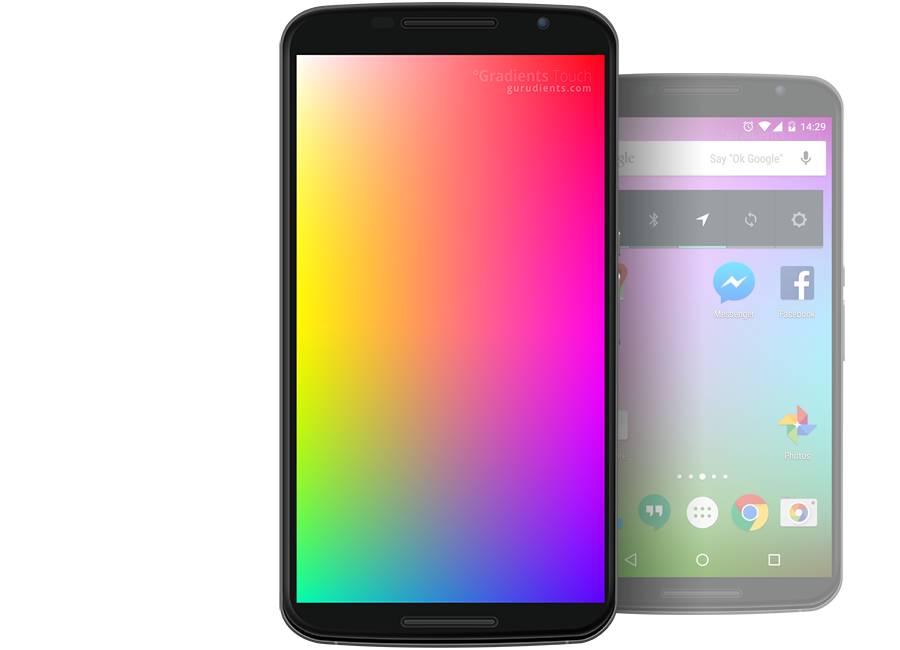Get
°Gradients Touch
to set up the best wallpapers
Create your magic gradient and share it with your friends on the social networking, or save it as unique wallpapers for your phone!
Gradients
In mathematics, the gradient is a generalization of the usual concept of derivative of a function in one dimension to a function in several dimensions. If f(x1, ..., xn) is a differentiable, scalar-valued function of standard Cartesian coordinates in Euclidean space, its gradient is the vector whose components are the n partial derivatives of f. It is thus a vector-valued function.
Similarly to the usual derivative, the gradient represents the slope of the tangent of the graph of the function. More precisely, the gradient points in the direction of the greatest rate of increase of the function and its magnitude is the slope of the graph in that direction. The components of the gradient in coordinates are the coefficients of the variables in the equation of the tangent space to the graph. This characterizing property of the gradient allows it to be defined independently of a choice of coordinate system, as a vector field whose components in a coordinate system will transform when going from one coordinate system to another.
The Jacobian is the generalization of the gradient for vector-valued functions of several variables and differentiable maps between Euclidean spaces or, more generally, manifolds. A further generalization for a function between Banach spaces is the Fréchet derivative.
Shaders
In the field of computer graphics, a shader is a computer program that is used to do shading: the production of appropriate levels of color within an image, or, in the modern era, also to produce special effects or do video post-processing. A definition in layman's terms might be given as "a program that tells a computer how to draw something in a specific and unique way".
Shaders calculate rendering effects on graphics hardware with a high degree of flexibility. Most shaders are coded for a graphics processing unit (GPU), though this is not a strict requirement. Shading languages are usually used to program the programmable GPU rendering pipeline, which has mostly superseded the fixed-function pipeline that allowed only common geometry transformation and pixel-shading functions; with shaders, customized effects can be used. The position, hue, saturation, brightness, and contrast of all pixels, vertices, or textures used to construct a final image can be altered on the fly, using algorithms defined in the shader, and can be modified by external variables or textures introduced by the program calling the shader.
Shaders are used widely in cinema postprocessing, computer-generated imagery, and video games to produce a seemingly infinite range of effects. Beyond just simple lighting models, more complex uses include altering the hue, saturation, brightness and/or contrast of an image, producing blur, light bloom, volumetric lighting, normal mapping for depth effects, bokeh, cel shading, posterization, bump mapping, distortion, chroma keying (so-called "bluescreen/ greenscreen" effects), edge detection and motion detection, psychedelic effects, and a wide range of others.


